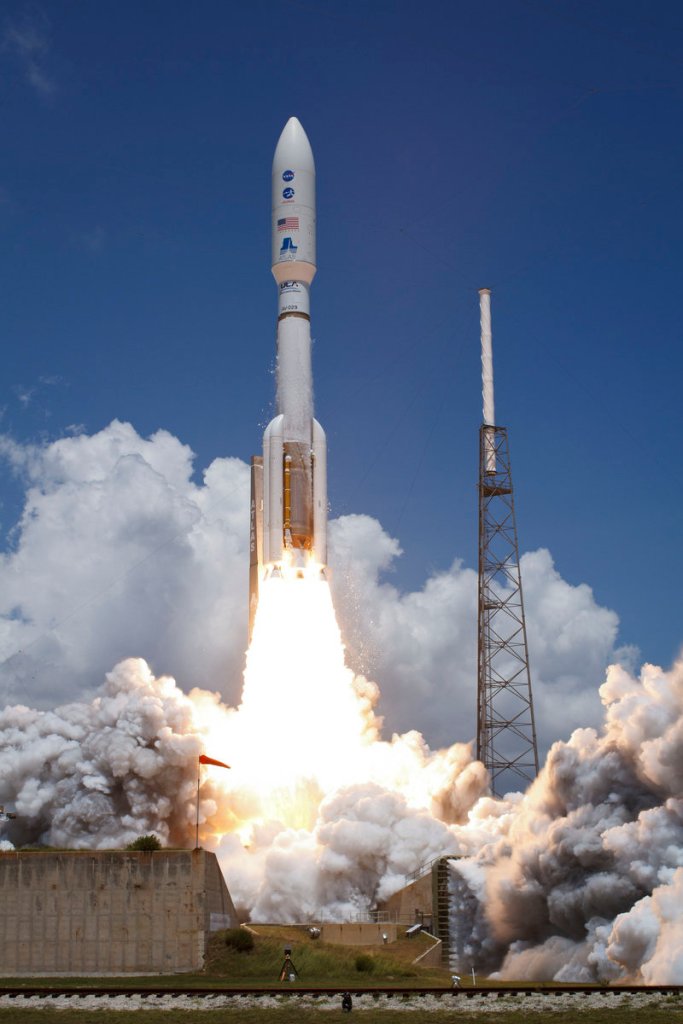CAPE CANAVERAL, Florida – A sun-powered robotic explorer named Juno is rocketing toward Jupiter on a fresh quest to discover the secret recipe for making planets.
Hundreds of scientists and their families and friends cheered and yelled “Go Juno!” as the unmanned Atlas rocket blasted into a clear midday sky Friday. It will take five years to reach Jupiter, the solar system’s most massive and ancient planet.
“It’s fantastic!” said Fran Bagenal, a planetary scientist at the University of Colorado at Boulder, who is part of the NASA project and watched from just four miles away. “Just great to see the thing lift off.”
Within an hour, Juno hurtled out of Earth’s orbit at 22,000 mph on a roundabout course for Jupiter. It was expected to whip past the orbit of the moon in half a day, or early this morning.
It is the first step in Juno’s 1.7 billion-mile voyage to the gas giant Jupiter, just two planets away but altogether different from Earth and Mars.
Juno is solar powered, a first for a spacecraft meant to roam so far from the sun. It has three huge solar panels that were folded for launch. Early indications were that they popped open an hour into the flight exactly as planned, each one stretching as long and wide as a tractor-trailer. Previous spacecraft to the outer planets have relied on nuclear energy.
With Juno, scientists hope to answer some of the most fundamental questions of our solar system.
“How Jupiter formed. How it evolved. What really happened early in the solar system that eventually led to all of us,” said Juno’s chief investigator Scott Bolton, an astrophysicist at Southwest Research Institute in San Antonio.
Bolton said Jupiter is like a time capsule. It got most of the leftovers from the sun’s creation nearly 5 billion years ago, and its enormous gravity field has enabled it to hold onto that original material.
Jupiter is so big it could contain everything in the solar system, minus the sun, and still be twice as massive. Astronomers say it probably was the first planet in the solar system to form.
Juno will venture much closer to Jupiter than any of the eight spacecraft that have visited Jupiter since the 1970s, most of them just passing by. The $1.1 billion mission will end with Juno taking a fatal plunge into Jupiter in 2017.
Send questions/comments to the editors.



Success. Please wait for the page to reload. If the page does not reload within 5 seconds, please refresh the page.
Enter your email and password to access comments.
Hi, to comment on stories you must . This profile is in addition to your subscription and website login.
Already have a commenting profile? .
Invalid username/password.
Please check your email to confirm and complete your registration.
Only subscribers are eligible to post comments. Please subscribe or login first for digital access. Here’s why.
Use the form below to reset your password. When you've submitted your account email, we will send an email with a reset code.